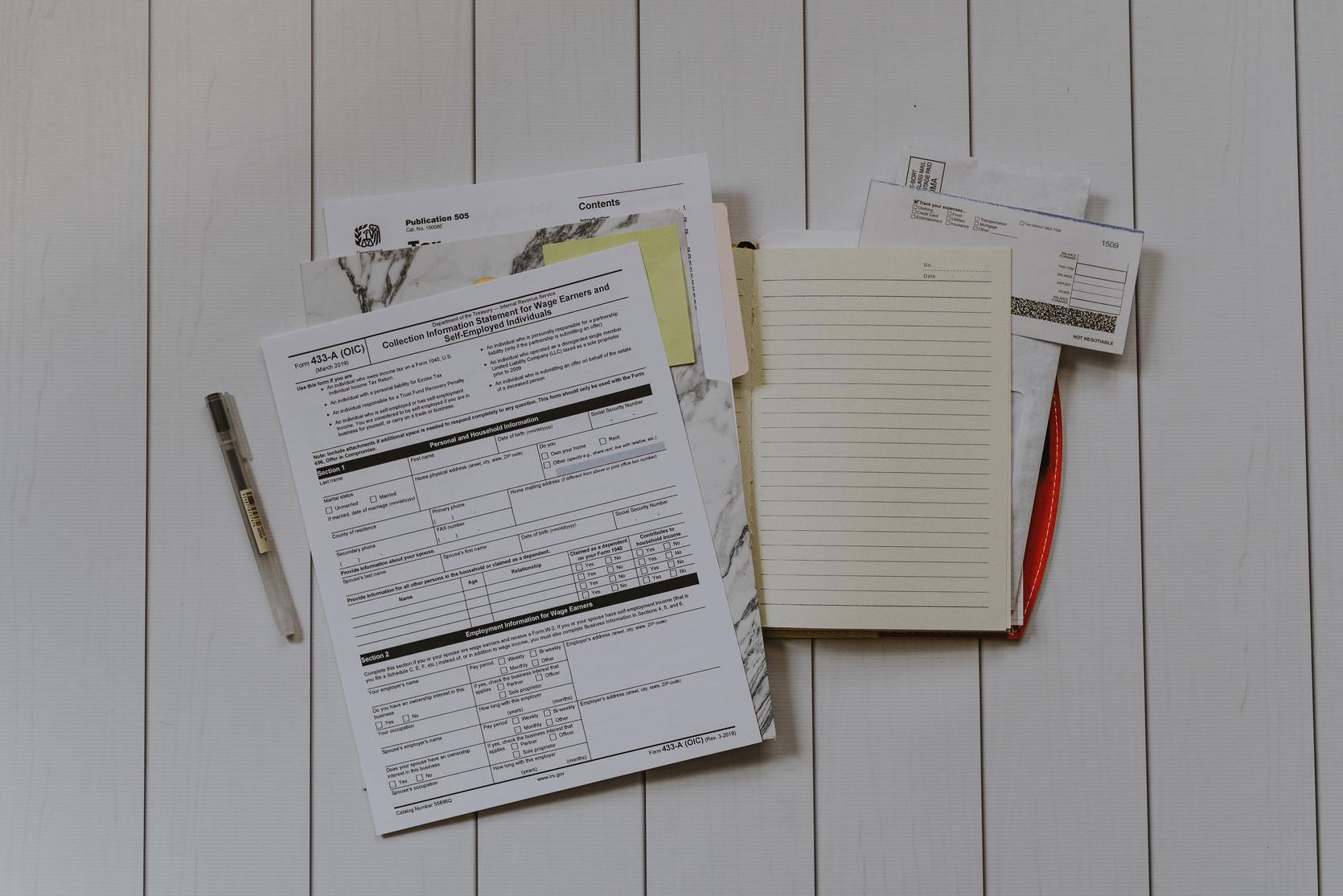Best Tax Deferred Investments
Understanding Tax Deferred Investments: A Guide for Real Estate Investors
Aside from diversifying your portfolio, the ability to take advantage of the tax benefits is one of the main reasons to invest in real estate. However, if you’re not careful, when it comes time to sell your investment property, you can get hit with a pretty hefty tax bill. Fortunately, you can avoid those tax bills in the meantime through tax deferred investment vehicles.
What are tax deferred investments?
Tax-deferred investments are financial vehicles that allow you to postpone paying taxes on the earnings or gains until a later date, usually upon withdrawal. This type of investment is advantageous because it lets the invested funds grow without being reduced by taxes in the short term, potentially leading to more substantial growth over time.
With that in mind, below are the best tax-deferred investment vehicles. Read over each one in order to learn which is the best fit for you.

Self-Directed IRA (SDIRA)
Regular IRA vs. SDIRA
As the name suggests, a self-directed IRA allows you to have more control over your investments. Unlike other IRA accounts, which limit you to investment vehicles that can be traded on the stock market, including stocks, bonds, mutual funds, exchange-traded funds (ETFs), annuities, or Real Estate Investment Trusts (REITs), self-directed IRAs allow for more flexibility. With this type of account, you can also invest in alternative investments like real estate, cryptocurrency, hedge funds, or individual businesses and partnerships.
In particular, with a self-directed IRA, you can invest in real estate assets such as:
- Residential real estate
- Commercial real estate
- Vacant land
- Mortgage notes
- Foreign real estate
- Tax liens
Understanding the tax benefit of an SDIRA
Similar to a regular IRA, you have the option of opening a traditional or a Roth SDIRA. If you choose a traditional SDIRA, you do not pay taxes when you contribute to the account. Instead, you’ll pay taxes when you eventually withdraw the funds. On the other hand, with a Roth SDIRA, you pay taxes on the money you contribute to the fund.
Typically, if your goal is to get the biggest tax benefit, it makes sense to go with a Roth SDIRA. This way, you’re only paying taxes on the amount that you contribute to the fund, rather than the amount you contribute plus any growth that occurs over time. Additionally, a Roth SIDIRA gives you the certainty of knowing what taxes you owe. With a traditional SDIRA, you’ll have no way of knowing the size of the tax bill that you’ll be responsible for in your golden years.
How to use an IRA to purchase real estate
Open and fund an SDIRA
The first step toward investing in real estate with an SDIRA is to open an account. You’ll want to go with a company that specializes in offering SDIRA plans, as these accounts can have potential tax consequences. Notably, most SDIRAs are managed by a custodian, who can help you handle the paperwork and approve your investments. While custodians are not financial advisors, they do serve to help you keep compliant with the appropriate rules and regulations.
Once you open your account, the next step is to find it. In this case, you can either find it directly by making the maximum allowable contribution based on your age or by rolling over a regular IRA account. You can roll over a regular IRA account into a same-kind SDIRA with no tax penalty.
Look for an investment property
Next, you work with a real estate agent to find the right investment property. Once you find that fits your needs and your budget, you’ll make an offer. In order to fund the purchase from your SDIRA, you must list the SDIRA as the buyer of the home and you, typically, must wait to receive authorization of the purchase from your custodian.
If you don’t want to wait for your custodian’s approval, you do have the option of opening what’s known as a “Checkbook SDIRA.” A checkbook SDIRA allows you to make investments without the approval of a custodian. However, having checkbook control means that you are responsible for maintaining the proper paperwork on every transaction and that you are liable for any prohibited transactions.
Fund the purchase
After your offer has been accepted, you will fund your earnest money deposit using money from your SDIRA, not any personal accounts. The money will be held in escrow until you’re ready to close on the home. At that point, your custodian will wire the rest of the funds needed to buy the property and you will add this investment to your property portfolio.
Managing and owning the property
it’s important to note that, in this case, your SDIRA is the owner of the property. Rental payments from your tenants will be made to the account and any expenses must be paid out of the account as well. However, in practical terms, this means that you typically won’t be able to access any of the profit from your investments until you are ready to take distributions in retirement.
Contributions and withdrawals
With an SDIRA, contributions and withdrawals were similar to any other IRA. Currently, if you are under the age of 50, you can contribute $6,000 per year. if you are over the age of 50, you can contribute an extra $1,000 per year. If you are married and filing jointly, those amounts double.
As far as withdrawals are concerned, 59.5 is currently the minimum age for taking penalty-free distributions, if you have a traditional SDIRA and you withdraw money before that time, the amount will likely be subject to a 10% tax penalty. On the other hand, if you have a Roth SDIRA, you can make an early withdrawal under certain circumstances, including buying your first home or using the money for educational expenses.
Once you are over the age of 59.5, provided that your account has been open for at least five years, you can make a withdrawal from a self-directed IRA tax and penalty free. If your account has been opened for less than 5 years, you will still have to pay tax on the amount that you withdraw, but you won’t face a penalty.
Understanding prohibited transactions
Lastly, it’s important to note that some transactions are prohibited under the SDIRA rules and regulations. Namely, transactions that involve disqualified persons. In this case, “disqualified persons” usually include yourself, your spouse, your direct family members like parents or children, or anyone who has advised you in a fiduciary capacity in the past.
Typically, custodians advise that you only use your SDIRA for transactions that are completely arm’s length, which means that all the parties involved operate independently of one another. For example, if you buy an investment property with your SDIRA, rather than doing any renovations yourself, it might be better to contract with a third party company to do the work.
Here, it’s important to understand that engaging in a prohibited transaction could put your whole IRA at risk. if you get caught, the IRS could disallow your entire account, which would force you to withdraw the entire amount and pay penalties on it.

Self-directed solo 401(k)
Solo 401(k)s offer tax deferred options for freelancers or small business owners with no employees. While a self-directed solo 401(k) is similar to an SDIRA in many respects, the biggest difference between the two is the contribution limit. In 2021, the contribution limit is $58,000, with an option to do a $6,500 catch-up contribution if you are over the age of 50.
To understand how the contribution for a solo 401(k) works, it’s important to think of yourself in two separate roles: the employer and the employee. As an employee, you can contribute up to $19,500 in 2021, plus the additional $6,500 catch-up contribution if you are of age. Then, as your own employer, you can make an additional contribution worth up to 25% of your net self-employment income as long as you conform to the total limit of $58,000.
How the tax benefits work
The other nice thing about a solo 401(k) is that you get to pick your own tax advantage. with a traditional solo 401(k) any contributions are made as a pre-tax deferral so they reduce your income for the year that they are made and your distributions are eventually taxed as ordinary income Meanwhile, with a Roth solo 401(k), the money is taxed upfront and your distributions are tax-free.
In general, it’s a good idea to invest in a Roth solo 401(k) if you think that your income will go up in the near future. However, if you think your income will stay the same or go down eventually, it may be worth it to take the tax break now.
How to buy real estate with a self-directed solo 401(k)
For the most part, buying real estate with a solo 401(k) works very similarly to a checkbook SDIRA. With this investment vehicle, you can invest in alternative assets, such as real estate, and you can self-manage the plan, meaning that you don’t need to get approval from a custodian. However, in exchange, that freedom also means that you have to be responsible for maintaining your own records and following the tax rules and regulations.
That said, it’s important to be aware that once your account balance exceeds $250,000, you will need to file a Form 550-SF with the IRS once a year.
Typically, once you’ve funded your account and you have found the right investment property, funding the down payment and purchase price is as easy as writing a check from your account.
Prohibited transactions
The rules around prohibited transactions for a solo 401(k) are similar to those for an SDIRA. On the whole, it’s a good idea to stick to arm’s length transactions and to avoid doing any transactions with disqualified persons.
Health Savings Accounts (HSAs)
Health savings accounts (HSAs) are particularly beneficial tax deferred investments for high-income earners, mainly due to their unique triple tax advantage.
Generally, health savings accounts (HSAs) are tax-free investment vehicles available to those who are enrolled in high-deductible health plans. They’re meant to help defray the cost of eligible expenses, such as doctor and dentist visits, prescriptions, and hospital stays. In 2021, the annual contribution limit for an HSA is $3,600 for individuals or $7,200 for families.
Notably, each year, any unused funds will roll over to the next and you do not lose your invested savings if you decide to change your plan later on down the road. Until the age of 65, if you use your savings for a medical expense, any withdrawal is tax free. However, after the age of 65, the money can be withdrawn and used however you please.
Investing in real estate with an HSA
While it is possible to invest in traditional real estate assets with an HSA, it is generally not recommended. After all, in the event of a medical emergency, it’s best if your Investments are liquid, which real estate is not. However, an alternative investment might be Real Estate Investment Trusts (REITS).
REITS are publicly traded companies that either invest in owning and operating real estate investment or funding real estate transactions. Investors can buy shares of these companies and, in exchange, they receive regular dividends. Yet, they can also sell the shares as needed to cover any expenses.

Doing a 1031 exchange
A 1031 exchange allows you to defer capital gains taxes by swapping an investment property for another similar (like-kind) property. This tax-deferral method, not confined to retirement accounts, is particularly advantageous for investors looking to continually reinvest in the real estate market.
The key benefit of a 1031 exchange is its repeatability. You can execute such exchanges multiple times, potentially deferring capital gains taxes indefinitely until you decide to exit the real estate investment arena. This essentially enables you to grow your real estate portfolio in a more tax-efficient manner.
However, carrying out a 1031 exchange can be complex, with stringent compliance requirements. Utilizing the services of specialized firms, known for being the best in 1031 exchange investments, is often a wise decision. These companies, often regarded as the best 1031 exchange companies, act as qualified intermediaries.
They not only ensure adherence to Treasury regulations, which mandate the involvement of such an intermediary, but also provide guidance through the various 1031 exchange investment options available. With their expertise, they can help you identify the best 1031 investments that align with your investment goals and risk profile.
Sheltering income with depreciation
Finally, if you buy real estate outside of a tax-advantaged account, you have the option of writing off depreciation in order to minimize your tax burden. At its core, depreciation allows you to write off a yearly allowance that’s tied to the value of the building. Usually, between depreciation and write-offs, it’s not uncommon for an investment property to be shown as a loss on your tax return.
How depreciation works
Since there’s no way of knowing how long an investment property will be inhabitable, the IRS uses standard depreciation periods. According to them, residential properties have a useful life of 27.5 years while commercial properties have a useful life of 39 years.
In order to find your yearly depreciation allowance, you generally just divide the value of the property by its standard depreciation period. For example, if you bought a $300,000 property, you would have a yearly depreciation allowance of $10,909.
Benefits of tax deferred investment options
Compound growth
Since taxes aren’t paid annually on the investment’s earnings, the entire amount remains invested and can compound over time. This can lead to significantly larger growth compared to taxable accounts where earnings are reduced by taxes each year.
Tax savings
By deferring taxes, investors in higher tax brackets during their working years can potentially pay less tax upon withdrawal, assuming they fall into a lower tax bracket in retirement.
Reduced taxable income
Contributions to tax-deferred accounts like traditional IRAs or 401(k)s lower your current taxable income, providing immediate tax relief.
Retirement savings encouragement
The tax advantages of these investments often encourage individuals to save more for retirement, which is especially beneficial for those who might not have a disciplined savings plan.
Flexibility in timing of taxation
Investors have control over when they pay taxes. They typically defer payment to a time when their income is lower, thus optimizing their overall tax situation.
The bottom line
While using deferred compensation to my house can have major tax benefits, the process behind it is usually quite complicated. With that in mind, if you’re going to go this route, it’s important to talk to a tax professional first to make sure you’re on the right track. Once you have their approval, you can move forward with your plan to grow your returns and lower your taxable income as much as possible.




What is the best IRA company to self-direct investments? I currently use Equity Trust and I am not happy with them. I currently use my SDIRA for properties and index funds. I want to start buying notes and wanted to consider a fresh start. Any feedback would be appreciated.
Hi Vince:
Thank you for your comment and question. Finding the “best” SDIRA company will boil down to personal preference. We have dealt with Equity Trust in the the past on many transactions. Both on the selling and buying sides. There are a very large organization. Being large, they are not nimble at all which some would consider as a poor trait.
In the world of investing, timing is everything. An SDIRA company that does not move quickly can significantly affect the outcome of a proposed investment in a very negative way.
We have had a lot of success with two companies in general.
Option 1)
Our first suggestion is iPlan Group. iPlan Group is a small and nimble SDIRA based out of Ohio that was created 2012. We love this company! The are friendly, fast, informative and best of all, nimble. Not to mention that if you can their toll free number, you will ALWAYS get a human. No recorded greetings or being bounced around from department to department. Finally, you can trade stocks and index funds on the TD Ameritrade Platform using your iPlan account. This is due to an exclusive partnership between TD Ameritrade and iPlan, which adds value to their service.
Option 2)
Quest IRA is another company that we have had great experiences with in our dealings. Quest is a Houston-based origination that provides a great service for SDIRA investors. They have always been helpful and straightforward in their communication and execution. It is a much larger company than iPlan, but smaller than Equity Trust, so they are not as nimble in the execution of funding. That being said, they are just as informative and customer-oriented as iPlan if you are looking for a large company to deal with in this sector. You will most likely not get a human on the phone on the first try like iPlan.
I hope this is helpful. Good luck in your search!